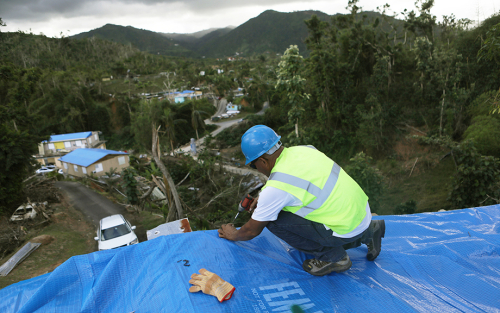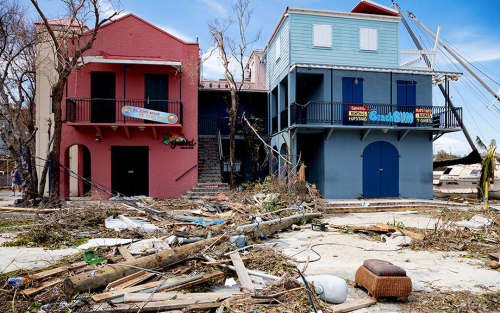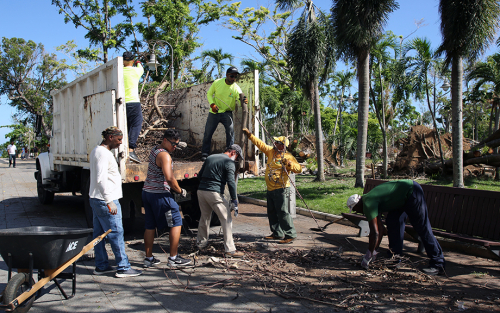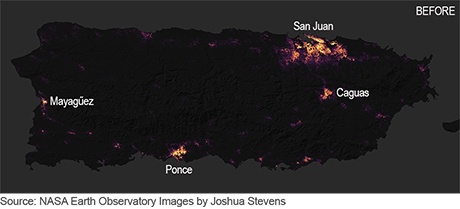U.S. Virgin Islands Struggle While Puerto Rico Rebounds

Almost two years after hurricanes Irma and Maria wreaked havoc on Puerto Rico and the U.S. Virgin Islands, the two territories’ economies have moved in very different directions. When the hurricanes struck, both were already in long economic slumps and had significant fiscal problems. As of mid-2019, however, Puerto Rico’s economy was showing considerable signs of improvement since the hurricanes, while the Virgin Islands’ economy remained mired in a deep slump through the end of 2018, though signs of a nascent recovery began emerging in early 2019. In this post, we assess the contrasting trends of these two economies since the hurricanes and attempt to explain the forces driving these trends.
Just Released: The New York Fed’s New Regional Economy Website
Jaison R. Abel, Jason Bram, Richard Deitz, and Jonathan Hastings The New York Fed today unveiled a newly designed website on the regional economy that offers convenient access to a wide array of regional data, analysis, and research that the Bank makes available to the public. Focusing specifically on the Federal Reserve’s Second District, which […]
Puerto Rico Post‑Maria: Twelve Months of Hardship

Puerto Rico recently observed the one-year anniversary of Hurricane Maria—the most destructive storm to hit the Commonwealth since the San Felipe Segundo hurricane in 1928. Maria, combined with Hurricane Irma, which had glanced the island about two weeks prior, is estimated to have caused nearly 3,000 deaths and tens of billions of dollars of physical damage Millions went without power for weeks, in most cases months. Basic services—water, sewage, telecommunications, medical care, schools—suffered massive disruptions. While it is difficult to assign a cost to all the suffering endured by Puerto Rico’s population, we can now at least get a better read on the economic effect of the storms. In this blog post, we look at a few key economic indicators to gauge the negative effects of the storms and the extent of the subsequent rebound—not only for the Commonwealth as a whole, but for its various geographic areas and industry sectors. We also examine data from the New York Fed Consumer Credit Panel to assess how well households held up financially and what effects the home mortgage foreclosure and payment moratoria had.
U.S. Virgin Islands’ Economy Hit Hard by Irma and Maria

In the nine months that have passed since Hurricanes Irma and Maria ravaged the Caribbean, much interest has been focused on Puerto Rico and its roughly 3.3 million American citizens, who weathered the largest blackout in U.S. history. However, far less attention has been paid to the U.S. Virgin Islands, even though St. Thomas, St. Croix, St. John, and a number of smaller islands suffered comparable devastation. This is partly attributable to their much smaller population: the U.S. Virgin Islands (“Virgin Islands”) is home to roughly 105,000 people—1/30th Puerto Rico’s population. Even so, this territory is also part of the United States and the New York Fed’s district. In this post, we examine roughly six months of economic and related data on the Virgin Islands’ economy to better ascertain the extent of disruption and subsequent recovery from the devastation of Hurricanes Irma and Maria.
Just Released: Puerto Rico and the U.S. Virgin Islands after Hurricanes Irma and Maria

An examination of the fallout from Hurricanes Irma and Maria on the economies of Puerto Rico and the U.S. Virgin Islands was the focus of an economic press briefing today at the New York Fed. Both U.S. territories were suffering from significant economic downturns and fiscal stress well before the storms hit in September 2017, raising concerns about their paths to recovery.
Beginning to Gauge Maria’s Effect on Puerto Rico’s Economy

Just two weeks after most of Puerto Rico dodged the proverbial bullet, missing the brunt of Hurricane Irma, the island was devastated by Maria—one of the ten strongest Atlantic hurricanes on record. Making landfall on September 20, 2017, the storm caused not only massive physical destruction and tragic loss of life but also widespread and persistent power outages, shortages of potable (and even nonpotable) running water, and disruptions to telecommunications and travel, among other issues. With the storm boosting costs and disrupting activity, the short-term economic impact is clearly significant. But an even greater concern is that the adverse short-term effects of the storm, overlaid on an already shrinking economy, may evolve into long-term adverse effects. In this post, we focus on the magnitude, duration, breadth and nature of the economic disruptions, as measured mostly by employment.
Puerto Rico’s Evolving Household Debts
Debt and its performance play a critical role in economic development. The enormous increase in mortgage debt that took place during the run-up to the 2007 financial crisis and the contribution of that debt to the crisis underscore the importance of household debt to financial stability and economic growth.
Human Capital and Education in Puerto Rico
An important element of human capital is educational attainment. A series of recent papers highlights the importance of the quality of education—which determines the skills actually learned, rather than the number of years spent in a classroom—as a main driver of growth.
Puerto Rico’s Shrinking Labor Force Participation
A key concern about Puerto Rico’s prospects is that its labor force participation rate, which is the percentage of the adult population either working or looking for work, has fallen sharply.
Just Released: Recent Developments in Consumer Credit Card Borrowing

The Federal Reserve Bank of New York’s Center for Microeconomic Data today released its Quarterly Report on Household Debt and Credit for the second quarter of 2016.










 RSS Feed
RSS Feed Follow Liberty Street Economics
Follow Liberty Street Economics